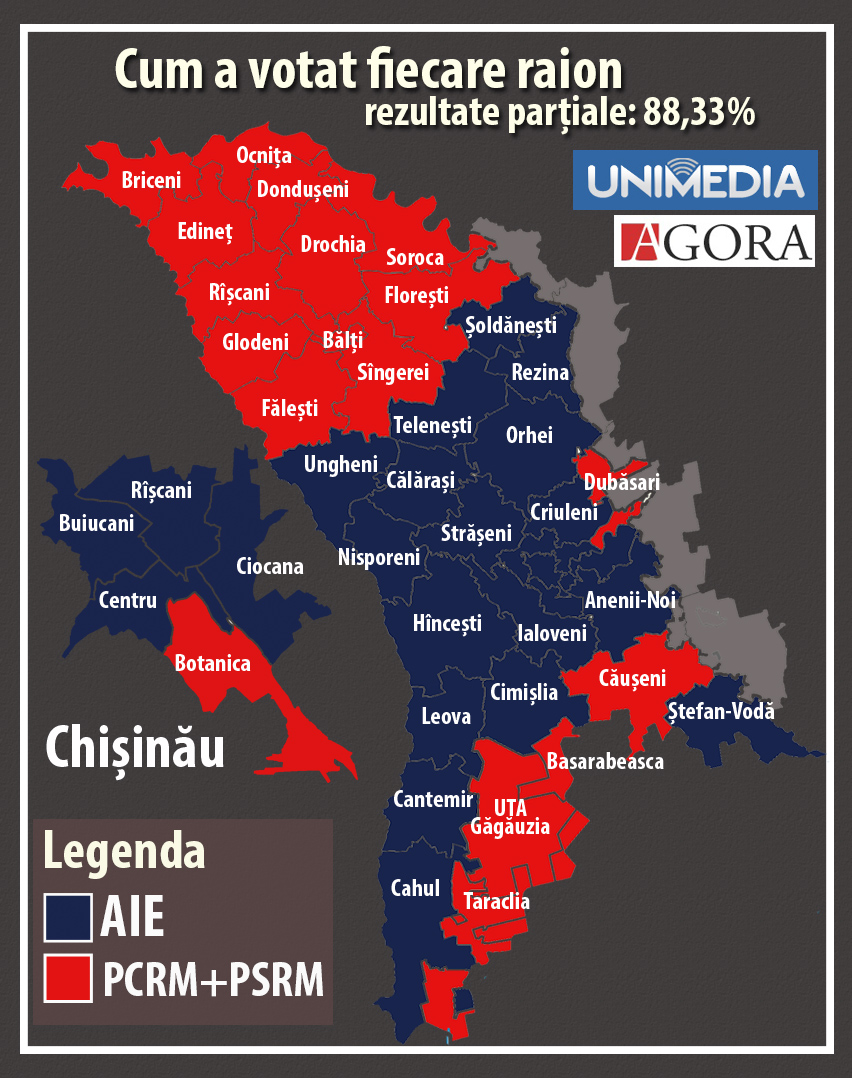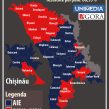
MOLDOVA: TWO STOOLS FOR THE WEST, TWO GILDED CHAIRS FOR MOSCOW AND TIRASPOL
Publication: Eurasia Daily Monitor Volume: 2 Issue: 187
By:

The United States and the European Union have accepted the status of observers to the “five-sided” format of negotiations toward conflict-resolution in Moldova. That format, created by Yevgeny Primakov in 1997 and abandoned by Moldova in 2004, had pitted Moscow, Kyiv, Tiraspol, and the OSCE against Chisinau and excluded the West from the equation. Over the past year, Moldova redoubled its efforts to invite the United States, the EU, and Romania as full participants in the negotiating format and to redefine the negotiations’ priorities as the withdrawal of Russian troops and the democratization of Transnistria, instead of “federal” power-sharing with Transnistria’s illegitimate authorities in the presence of Russian troops.
The response from Washington and Brussels seems unedifying. They have decided to join the format only in the capacity of observers, and they have accepted Moscow’s and Kyiv’s thesis that even that modest role requires Tiraspol’s consent. On September 23, the U.S. deputy chief of mission in Chisinau, the American chief of the OSCE mission, and the British ambassador on behalf of the EU’s British presidency all trooped to Tiraspol’s “ministry of foreign affairs” to request that permission.
On September 27, a final consultative (not negotiating) session of the “five-sided” format meeting in Odessa invited the United States and the EU to join the format as observers with Tiraspol’s “consent.” That same day, Moldovan President Vladimir Voronin, meeting with his Romanian counterpart Traian Basescu in Iasi, Romania, again called in vain for full-fledged U.S. and EU participation.
The 5+2 format is scheduled to begin functioning on October 25-26 at a session to be held in Chisinau and Tiraspol. In this format, the United States and the EU will be entitled to ask and answer questions, but will have no vote and no part in decisions. What they might achieve under this dispensation seems far from clear at this point. However, both within and on the margins of the emergent 5+2 format, several pitfalls seem apparent.
First, Chisinau and Tiraspol will continue to be treated as co-equal parties, and negotiations will continue to proceed on the Moscow-imposed assumption that a conflict exists between two parts of Moldova. The 5+2 negotiations seem set as before to disregard the fact that Russia is engaged in an interstate conflict, having seized a part of Moldova’s territory by force and appointed citizens of the Russian Federation to administer that territory. The European Court for Human Rights recognized these facts explicitly in its June 2004 verdict that pronounced Russia an “occupying power” and the Tiraspol leaders as “agents” of that power. For their part, the United States and the EU all along recognized that the conflict is not an inter-ethnic one, and are calling (albeit ineffectually) for withdrawal of Russian troops, thus implicitly admitting to the inter-state nature of the conflict. However, they do not seem about to follow that logic in the 5+2 format.
Second, the disjunction between the U.S. State Department and the American-led OSCE Mission seems to deepen. Interviewed in the Chisinau weekly Saptamina (September 24-October 1), OSCE Mission chief William Hill argues that the OSCE-Russian proposal of February 2004 remains the most appropriate framework for conflict-resolution in Moldova. That proposal envisaged legalization of Russian-installed authorities in Transnistria, granting them a share of central power in Chisinau, and placing the “federalized” Moldova under mainly Russian “guarantees” with an OSCE cover. Moldova rejected that proposal and any “federalization” project in June 2004, and the State Department abandoned that approach by November that same year. In July 2005, again seeming to contradict State Department policy, the OSCE Mission jointly with Russia submitted a military plan that equalizes Moldova’s and Transnistria’s armies and calls for mutual force reductions over a 10-year period under mainly Russian military oversight on Moldova’s entire territory, while exempting Russia’s own forces from reductions and inspection (see EDM, September 15). In the new 5+2 format, the American-led OSCE Mission is a full member while the U.S. State Department is only an observer.
Third, the continuing exclusion of Moldova’s neighbor Romania is unjustifiable and it hobbles the new format. Washington seemed to favor Romania’s participation, but the American-led OSCE Mission in Chisinau opposed it, as did the EU, in deference to Russia and Tiraspol. The EU claims, moreover, that Romania could air its views on the matter through the EU’s Common Foreign and Security Policy. This excuse looks artificial, not only because Romania is not yet an EU member and CFSP participant, but especially because the CFSP as such does not yet exist. Moreover, Brussels thereby penalizes an incoming member of the EU (Romania is expected to join in 2007) while treating Moldova’s other neighbor, Ukraine, as a fully legitimate participant in the negotiations, without possibly expecting Kyiv to adhere to the putative CFSP.
(Moldpres, Olvia Press, September 27-October 1)




